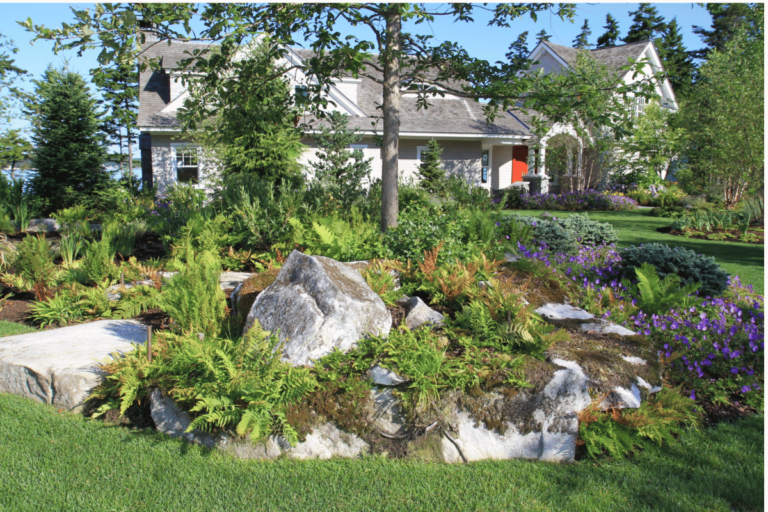Advantages of Native Plants
The fact is that native plants have been evolving for thousands of years to
fit the specific region in which they grow. Many advantages come with
landscaping using native plants, such as water conservation, lower maintenance
requirements and support for local wildlife. These native plants can be
supported by the regional climate and soil conditions, meaning they do not
require a lot of water, fertilizer or pest control like non-native species.
The significant advantage of these regional plants is their contribution to
supporting ecosystems locally. Local insects, birds and pollinators rely
heavily on them as food and shelter sources. By blending your landscape with
native species, you will create a thriving, diverse environment capable of
supporting many different living things. Moreover, this helps keep the natural
balance, preventing the invasion of exotic species that have not adapted to the
local ecosystem.
Besides this, it also helps in preventing soil erosion and enhances soil
quality. Through deep root systems, these plants stabilize soils, thus reducing
erosion risks caused by wind action and surface runoff. Besides this, these
roots improve soil structure while increasing water infiltration; hence,
healthier soils result in less runoff. It leads us to another point: they
contribute to nutrient cycling, enhancing fertility levels over time.
Another significant gain lies in cutting chemical consumption down. For
example, native plants resist pests better due to their adaptation to a
particular locality than exotics, which need regular spraying against diseases
and insect pests (Farrell 17). It implies that when native gardens are
established, money is saved, and health is retained for beneficial
microorganisms in soil living organisms or water bodies being supplied (Andrew
et al., 2003).
Choosing Suitable Plants for Your Area
Determining appropriate indigenous flora involves researching what nature
has already given you regarding plant life around you (Merrill 5). Start by
knowing your local climate type, soil type and conditions for growth. Native
plant societies, local gardening resources, and extension services can be a
good source of this information concerning your area (Merrill 5). Then, find
lists of suggested species and how they are cultivated successfully from these
sources.
Their growth habits, light requirements, and water needs should determine
which one suits you among the native plants considered. To create a resilient
and diverse landscape, ensure you have different types of plants like trees,
shrubs, perennials, and ground covers.
Adopting such an approach will make it easier to maintain them since those requiring
similar amounts of water or light can also be planted together in one group
(Andrew et al., 2003). Also, think about which other plants can provide
supplementary assistance regarding their functions so that things can work
harmoniously within your yard.
Mix flowering plants that bloom at distinct times during the year; therefore,
there will always be something for pollinators to feed on continuously. Native
grasses and sedges should also be part of the garden design because they add
texture and movement, providing habitat for beneficial insects. You may also
include some fruiting/seeding types that attract wildlife, thus giving your
garden more meaning than just being an ordinary place.
This design concept mimics natural ecosystems by employing a layered
vegetation strategy that creates balance while maintaining visual appeal.
Develop borders, hedges or focal points using native plants and then integrate
them with rockwork, pathways or aquatic bodies to thoroughly blend into other
features found in the landscape (Merrill 20).
Apart from serving ecological purposes, these elements would improve
aesthetics, creating a more enjoyable space throughout the year. By selecting
suitable Indigenous plants and designing with biodiversity in focus, you can
create a beautiful and sustainable landscape that supports local fauna and
conserves valuable resources. It also enhances your surroundings through
environmentally friendly planting schemes that make you proud as they
contribute to nature preservation and developing green spaces for future
generations.
Explore More Gardening Tips and Ideas
Source: Native Plants And Sustainable Landscaping


